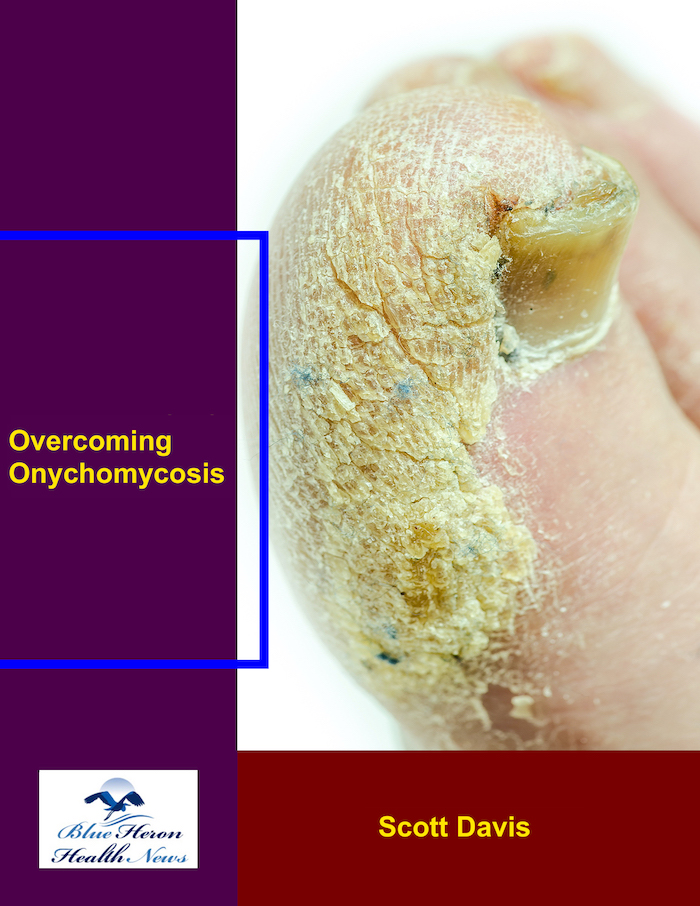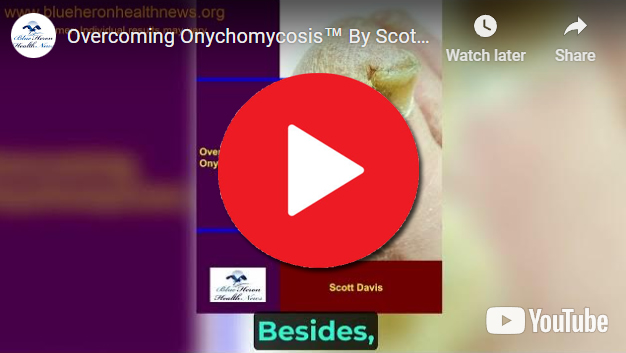
Overcoming Onychomycosis™ By Scott Davis It is a simple, natural, and all-in-one solution for onychomycosis. The program can help you to treat your nail fungus naturally. Once you follow this program, you do not need to spend on expensive treatments to prevent a recurrence. In brief, you can have a proven solution for your chronic nail fungus. Besides, the program is easy to follow, and most users find it effective against onychomycosis.
What causes onychomycosis?
Introduction
Onychomycosis, also known as tinea unguium, is a fungal infection of the nails. It is a common condition that affects millions of people worldwide and can significantly impact the appearance and health of the nails. Understanding the causes of onychomycosis is essential for effective prevention, management, and treatment. This comprehensive analysis explores the various factors that contribute to the development of onychomycosis, including the types of fungi involved, predisposing factors, and environmental influences.
Anatomy and Physiology of the Nail
Structure of the Nail
The human nail consists of several key components:
- Nail Plate: The hard, visible part of the nail.
- Nail Bed: The skin beneath the nail plate.
- Nail Matrix: The tissue under the base of the nail that produces new nail cells.
- Cuticle: The tissue that overlaps the nail plate and the nail fold.
- Nail Fold: The skin that frames the nail on three sides.
Types of Fungi Causing Onychomycosis
Onychomycosis can be caused by dermatophytes, non-dermatophyte molds, and yeasts. Each type of fungus has specific characteristics and preferred environments, contributing to the development of nail infections.
Dermatophytes
Dermatophytes are the most common cause of onychomycosis. These fungi require keratin for growth and typically infect hair, skin, and nails.
- Trichophyton rubrum: The most common dermatophyte responsible for onychomycosis. It primarily affects the nails and skin.
- Trichophyton mentagrophytes: Another common cause of nail infections, often associated with athlete’s foot.
- Epidermophyton floccosum: Less commonly involved but can also cause nail infections.
Non-Dermatophyte Molds
Non-dermatophyte molds can also cause onychomycosis, particularly in individuals with nail trauma or those who are immunocompromised.
- Scopulariopsis brevicaulis: A less common cause of onychomycosis, often associated with traumatic nail injuries.
- Fusarium species: Frequently found in soil and plants, Fusarium species can infect nails, particularly following trauma.
- Aspergillus species: Known to cause infections in immunocompromised individuals.
Yeasts
Yeasts, particularly Candida species, can cause onychomycosis. Candida infections are more common in individuals with chronic paronychia or those frequently exposed to water.
- Candida albicans: The most common yeast causing nail infections, particularly in those with a history of paronychia or chronic exposure to water.
- Candida parapsilosis: Another yeast that can infect nails, often associated with immunocompromised individuals.
Predisposing Factors for Onychomycosis
Several factors can increase the risk of developing onychomycosis. These include age, gender, genetics, underlying health conditions, environmental factors, and lifestyle habits.
Age
- Older Adults: The risk of onychomycosis increases with age. Older adults are more susceptible due to reduced blood circulation, slower nail growth, and greater cumulative exposure to fungi.
Gender
- Men: Onychomycosis is more common in men than in women, although the reasons for this gender difference are not entirely understood.
Genetics
- Family History: A family history of onychomycosis or other fungal infections can increase an individual’s risk, suggesting a genetic predisposition.
Health Conditions
- Diabetes: Individuals with diabetes are at higher risk due to impaired blood circulation and immune function.
- Peripheral Vascular Disease: Reduced blood flow to the extremities can make nails more susceptible to infection.
- Immunosuppression: Conditions or medications that suppress the immune system, such as HIV/AIDS or chemotherapy, increase the risk of fungal infections.
- Psoriasis: Nail changes associated with psoriasis can mimic onychomycosis and make nails more vulnerable to fungal infection.
Environmental Factors
- Warm, Moist Environments: Fungi thrive in warm, moist environments. Exposure to communal showers, swimming pools, and locker rooms increases the risk of infection.
- Footwear: Wearing tight-fitting or non-breathable shoes creates a warm, moist environment conducive to fungal growth.
Lifestyle Habits
- Nail Trauma: Injuries to the nail can create an entry point for fungi.
- Frequent Water Exposure: Repeated exposure to water can weaken the nail and surrounding skin, making them more susceptible to infection.
- Poor Nail Hygiene: Inadequate cleaning and trimming of nails can contribute to the development of onychomycosis.
Pathophysiology of Onychomycosis
The development of onychomycosis involves the colonization and invasion of the nail by fungi. The process can be divided into several stages:
- Colonization: Fungi adhere to the nail surface and begin to colonize the keratin.
- Invasion: Fungi penetrate the nail plate and invade the nail bed. Dermatophytes produce enzymes such as keratinases, which break down keratin and facilitate fungal invasion.
- Proliferation: Fungi multiply and spread within the nail, causing structural damage and characteristic symptoms such as discoloration, thickening, and deformity.
Types of Onychomycosis
Onychomycosis can be classified into several types based on the location and pattern of infection:
- Distal Subungual Onychomycosis (DSO): The most common type, affecting the distal (tip) part of the nail and the nail bed. It usually starts at the free edge and spreads toward the cuticle.
- White Superficial Onychomycosis (WSO): Characterized by white, chalky patches on the surface of the nail plate. This type is usually caused by Trichophyton mentagrophytes.
- Proximal Subungual Onychomycosis (PSO): Starts at the proximal nail fold and spreads distally. It is often seen in immunocompromised individuals and is typically caused by Trichophyton rubrum.
- Endonyx Onychomycosis: Involves the nail plate without affecting the nail bed. It presents with white discoloration and separation of the nail plate from the nail bed.
- Candidal Onychomycosis: Caused by Candida species, affecting the nail plate, bed, and matrix. It is commonly seen in individuals with chronic paronychia or those frequently exposed to water.
Diagnosis of Onychomycosis
Accurate diagnosis of onychomycosis is essential for effective treatment. Diagnosis typically involves a combination of clinical examination and laboratory tests.
Clinical Examination
- Visual Inspection: The healthcare provider will examine the affected nails for signs of discoloration, thickening, deformity, and other characteristic symptoms.
- Patient History: A detailed patient history, including any predisposing factors, previous infections, and underlying health conditions, will be taken.
Laboratory Tests
- Microscopy: A sample of nail clippings or scrapings is examined under a microscope to detect the presence of fungal elements. Potassium hydroxide (KOH) preparation is commonly used to dissolve keratin and highlight fungal structures.
- Culture: Nail samples are cultured on specific media to identify the causative organism. This process can take several weeks but provides definitive identification of the pathogen.
- Histopathology: Nail biopsy specimens are examined under a microscope after staining to identify fungal elements. This method is useful for confirming the diagnosis in complex cases.
- Polymerase Chain Reaction (PCR): A molecular diagnostic test that can detect fungal DNA in nail samples, providing rapid and accurate results. PCR is especially useful for identifying non-dermatophyte molds and mixed infections.
Treatment of Onychomycosis
Treatment of onychomycosis can be challenging and often requires a combination of therapies. The choice of treatment depends on the severity of the infection, the causative organism, and the patient’s overall health.
Topical Treatments
Topical antifungal treatments are often used for mild to moderate cases of onychomycosis:
- Ciclopirox (Penlac): An antifungal nail lacquer applied daily to the affected nails. It requires regular debridement and long-term use.
- Efinaconazole (Jublia): A topical solution applied once daily to the affected nails. It is effective against dermatophytes and non-dermatophyte molds.
- Tavaborole (Kerydin): Another topical solution applied daily to the infected nails. It penetrates the nail plate and inhibits fungal protein synthesis.
Oral Treatments
Oral antifungal medications are typically used for more severe cases of onychomycosis:
- Terbinafine (Lamisil): A commonly prescribed oral antifungal taken daily for 6 to 12 weeks. It is effective against dermatophytes and has a high cure rate.
- Itraconazole (Sporanox): Another oral antifungal taken in pulses (one week per month) or continuously for several weeks. It is effective against dermatophytes, non-dermatophyte molds, and yeasts.
- Fluconazole (Diflucan): An oral antifungal that may be used in certain cases. It is particularly effective against Candida species.
Combination Therapy
In some cases, a combination of topical and oral treatments may be used to increase the effectiveness of treatment. This approach can help achieve higher cure rates and reduce the risk of recurrence.
Laser Therapy
Laser therapy involves the use of focused light to target and destroy fungal cells in the nail. This treatment is relatively new and may be used in conjunction with other therapies:
- Procedure: The laser emits heat that penetrates the nail plate and destroys the fungi without damaging surrounding tissues.
- Effectiveness: Laser therapy has shown promising results in clinical studies, but long-term efficacy and recurrence rates need further investigation.
Surgical Treatments
In severe cases of onychomycosis, surgical treatments may be necessary:
- Nail Avulsion: The removal of the infected nail to allow topical treatments to penetrate the nail bed more effectively. This procedure can be partial or complete.
- Matrixectomy: The surgical destruction or removal of the nail matrix to prevent the regrowth of the infected nail. This procedure is considered for recurrent or resistant infections.
Prevention of Onychomycosis
Preventing onychomycosis involves adopting good hygiene practices and lifestyle changes to reduce the risk of fungal infections:
- Maintain Good Nail Hygiene: Keep nails clean and dry. Trim nails straight across and file down thickened areas.
- Avoid Walking Barefoot in Public Areas: Wear protective footwear in communal showers, swimming pools, and locker rooms.
- Choose Breathable Footwear: Wear shoes that allow air circulation and avoid tight-fitting shoes.
- Change Socks Regularly: Change socks daily and choose moisture-wicking materials to keep feet dry.
- Avoid Sharing Personal Items: Do not share nail clippers, shoes, or towels with others.
- Disinfect Nail Tools: Regularly clean and disinfect nail tools to prevent the spread of infection.
- Use Antifungal Sprays or Powders: Apply antifungal sprays or powders to shoes and feet to reduce the risk of infection.
Complications of Onychomycosis
Untreated or severe onychomycosis can lead to several complications:
- Pain and Discomfort: Thickened, deformed nails can cause pain and discomfort, particularly when wearing shoes or walking.
- Secondary Infections: Damaged nails can provide an entry point for bacterial infections, leading to cellulitis or paronychia.
- Spread of Infection: Fungal infections can spread to other nails, the skin (athlete’s foot), or other parts of the body.
- Psychological Impact: The appearance of infected nails can cause embarrassment, social anxiety, and reduced self-esteem.
- Impact on Quality of Life: Severe onychomycosis can affect daily activities and mobility, leading to a reduced quality of life.
Conclusion
Onychomycosis is a common and often persistent fungal infection of the nails that can significantly impact nail health and appearance. Understanding the causes, risk factors, symptoms, and diagnostic methods is essential for effective treatment and prevention. By adopting good hygiene practices, seeking timely medical intervention, and adhering to prescribed treatments, individuals can manage onychomycosis and minimize its impact on their lives. Public awareness and education are crucial for empowering individuals to recognize the symptoms of onychomycosis and seek appropriate treatment. With proper management and care, the effects of onychomycosis can be minimized, improving overall nail health and quality of life.
Overcoming Onychomycosis™ By Scott Davis It is a simple, natural, and all-in-one solution for onychomycosis. The program can help you to treat your nail fungus naturally. Once you follow this program, you do not need to spend on expensive treatments to prevent a recurrence. In brief, you can have a proven solution for your chronic nail fungus. Besides, the program is easy to follow, and most users find it effective against onychomycosis.
